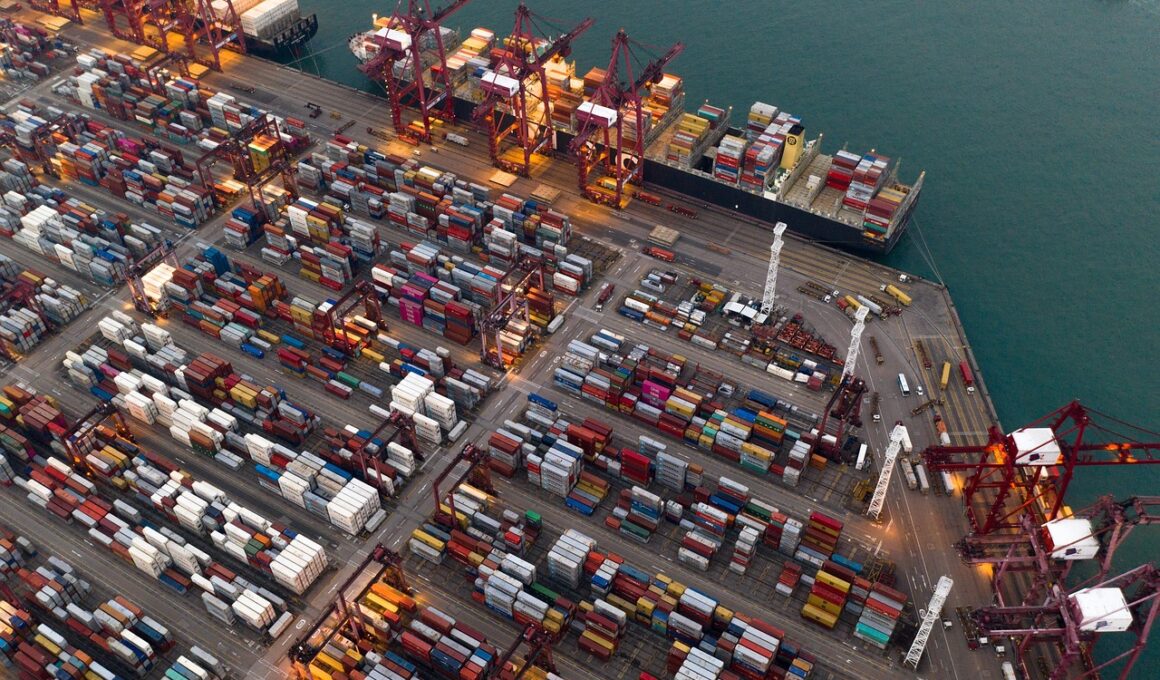Evaluating the Economic Impact of Port and Airport Development
Ports and airports serve as crucial gateways for international trade and tourism, affecting regional economic development immensely. Their roles extend beyond mere transport facilities, influencing job creation, local investments, and overall economic health. In regions where ports thrive, the economic landscape often flourishes as they attract associated industries such as logistics, manufacturing, and services. Similarly, airports facilitate tourism and business travel, generating revenue that propels local economies forward. Evaluating the economic impact of these infrastructures involves comprehensive analyses that consider direct and indirect effects on the economy. Various methodologies exist for assessment, from economic modeling to cost-benefit analysis, each providing insight into potential monetary benefits and societal gains. Accurate measurement ensures informed investment decisions, facilitating improvements in infrastructure that can lead to enhanced competitiveness. Policymakers, therefore, need to weigh returns carefully against investments to determine optimal strategies. Port and airport developments uniquely stimulate economic growth, yet potential negative externalities must also be considered, such as environmental impacts and social challenges. Balancing these factors is essential for sustainable development while maximizing local and national economic benefits effectively.
Port Development: Economic Contributions and Challenges
When assessing the economic contributions of port development, a multifaceted approach is required. Ports directly generate employment through port operations and associated activities, such as shipping, logistics, and warehousing. The ripple effect extends into surrounding communities, where new service-based jobs can emerge in hospitality and retail sectors due to increased traffic from import and export activities. However, challenges such as urban congestion and infrastructure strain are often associated with port expansion. Policymakers must consider required investments in road networks and public transport accessibility. Additionally, environmental concerns arise, including impacts on local ecosystems and air quality. Mitigating these impacts necessitates innovation and sustainable practices in port operations. Public-private partnerships can be vital in funding developments while ensuring social accountability and community engagement. Economic modeling often showcases a return on investment that underscores the potential benefits of port enhancements, supporting broader discussions for funding allocations and prioritizing efficient operations. A detailed evaluation incorporating community input and environmental assessments ensures that port development aligns with long-term regional goals, paving the way for responsible and effective economic growth while minimizing unwanted consequences.
Airports also play a decisive role in economic development, augmenting regional prosperity through connectivity and accessibility. The operational capacity of an airport influences its ability to attract airlines and travelers, which in return stimulates local economies through tourism and business travel. Jobs related to airport operations, such as freight handling and terminal management, further contribute to employment rates. Local businesses, especially restaurants and hotels, often see increased patronage based on traveler volume, enhancing their income significantly. Yet, the expansion of airports can create challenges regarding community displacement and environmental degradation. Sustainable airport planning involves integrating eco-friendly practices and ensuring that local populations are not adversely affected. For instance, noise pollution and traffic congestion must be mitigated through effective management strategies. Cost-benefit analyses and environmental impact assessments serve as essential tools in decision-making processes, providing insights into the long-term economic viability of proposed expansions. By combining transportation efficiency with responsible environmental stewardship, airports can emerge as pivotal players in bolstering regional economics while promoting sustainable development practices conducive to community wellbeing.
Public and Private Investment in Transportation Infrastructure
Investment in transportation infrastructure is a central theme when discussing the developments of ports and airports. Both public and private sectors play vital roles, and their collaboration can drive positive economic outcomes. Public funds are often allocated to infrastructure improvements, as they carry inherent social responsibilities such as ensuring accessibility and safety for all users. However, significant investments are often required, leading to discussions about potential private partnerships which can alleviate the financial burden on public resources. Private investors are frequently attracted by the potential for profit generation through expanded services, making their participation crucial in securing funding for ambitious projects. Successfully structured partnerships can develop critical infrastructure while sharing risks and rewards effectively. Furthermore, stakeholders must engage in comprehensive planning that considers future demand trends, ensuring that developments are robust against market fluctuations. Integrated planning frameworks can facilitate cooperation among various agencies, leading to synchronised development objectives that align social, economic, and environmental goals. The overall result fosters robust transportation networks essential for maintaining economic competitiveness while promoting innovation in practices and designs that benefit society at large. Balancing these elements will determine the success of future projects.
Economic impact assessments play a vital role in determining the viability of port and airport projects. They provide necessary data that enables stakeholders to make informed decisions regarding resource allocation and community impact. Detailed analyses evaluate not only immediate benefits brought about by job creation and increased trade but also long-term influences such as infrastructural improvements and enhanced quality of life for residents. For instance, enhanced accessibility often leads to increased economic opportunities, allowing communities to flourish. Engaging local populations through participative processes can yield valuable insights and foster community support for projects, minimizing opposition. Caution is warranted when assessing initial projections of economic growth, particularly in terms of unforeseen consequences. Studies indicate that overestimating benefits can lead to significant budgeting issues and stakeholder disappointment. Thus, employing conservative and realistic estimates ensures that assessments remain credible. Utilizing both quantitative and qualitative metrics in evaluations results in a holistic view of projected impacts, from environmental concerns to social dynamics. By continually revisiting and updating economic assessments, stakeholders can adapt to changing circumstances and real-world conditions, ensuring that port and airport developments contribute positively to overall growth objectives.
Sustainable Practices in Port and Airport Development
Sustainability must be at the forefront of decisions related to port and airport development to mitigate potential environmental impacts. Adopting green technologies and practices is essential to ensure that infrastructure growth does not lead to irreversible ecological changes. For instance, ports can implement measures such as efficient waste management systems and emissions reduction strategies. Likewise, airports can integrate renewable energy sources and eco-efficient designs to minimize carbon footprints. Engaging with local communities to promote understanding and acceptance of these practices can lead to broader support and enhanced project feasibility. Innovation plays a significant role in fostering sustainability, prompting industry stakeholders to collaborate on solutions that improve operational efficiency while preserving local ecosystems. Enhancements in operational technologies and transportation logistics present further opportunities for sustainable development. For example, utilizing electric vehicles for ground transportation at airports can significantly reduce environmental impacts. Furthermore, communication strategies that focus on the environmental advantages of sustainable practices help cultivate public support while promoting an environmentally responsible image. Through strategic investments in sustainable technology and practices, ports and airports can bolster their economic contributions while ensuring that the health of ecosystems is prioritized.
To conclude, evaluating the economic impact of port and airport development is integral to formulating effective transportation policies and strategies. Policymakers must weigh multiple facets, including economic, social, and environmental considerations, to create balanced solutions that yield beneficial outcomes for all stakeholders involved. The interplay between transport infrastructure and local economies highlights the interconnectedness of these sectors, suggesting that investment in improvements can spur growth and opportunity. As regions continue to confront challenges such as population growth and climate change, efficient port and airport operations become even more critical in sustaining economic prosperity. Consequently, ongoing evaluations and adaptations based on changing circumstances will ensure that development strategies remain relevant and effective. These infrastructures are not just means of transport; they exemplify the cornerstone of economic activity, influencing myriad facets of the marketplace. By fostering collaboration among public and private partners, dedicated efforts towards evaluating and enhancing the benefits of these essential infrastructures are crucial. In summary, understanding the economic ramifications of port and airport developments can lead to thriving economies intertwined with sustainable practices that pave the way for future growth.
Investing in ports and airports is more than infrastructure; it’s about enabling economic progress.


